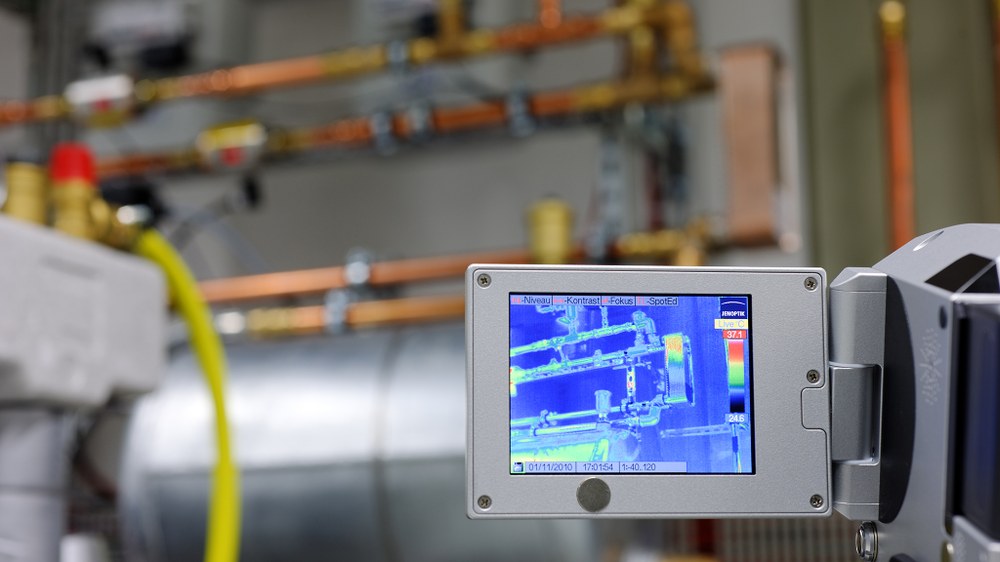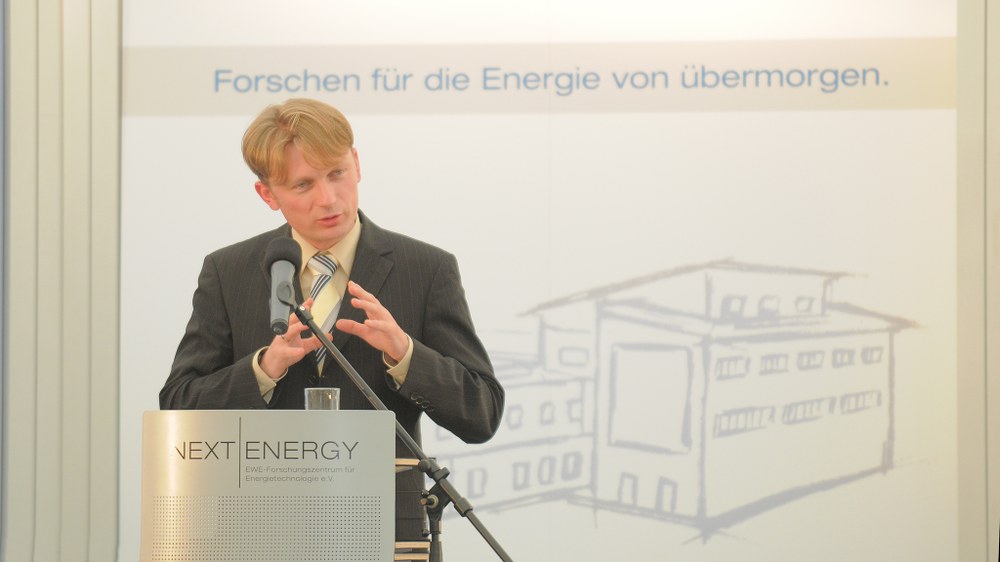Overview: The Institute's history
The Institute of Networked Energy Systems has existed since June 2017. However, the current research portfolio is based on developments that date back far beyond the official founding date.




In the early 2000s, the public debate on energy transition gained momentum. The Kyoto Protocol defined greenhouse gas emissions as a binding international law for the first time came into effect in 2005. In Germany, the Renewable Energy Sources Act (EEG) gradually took effect from 2000 onwards, introducing guaranteed feed-in tariffs for renewable energy sources and prioritising them over conventional power generation. This made the construction of solar and wind power plants increasingly economically viable. This development created additional incentives in the energy industry and research to optimise plants, components and materials.

At that time, the University of Oldenburg was already known as a location for energy research and had long established a reputation as a pioneer in renewable energies. Just a few kilometres away, the Oldenburg-based energy provider EWE AG saw both a responsibility and a development opportunity to become a pioneer in the energy sector. On this basis, both sides came together to jointly deepen the traditions and strengths of the Oldenburg location. As a result, in 2006 they paved the way for the ‘EWE Research Centre for Energy Technology’, which was founded in March 2007 as a non-profit association under the auspices of the University of Oldenburg, the state of Lower Saxony and EWE AG in a public-private partnership.
Prof. Carsten Agert was appointed as the founding director of the institute which would operate under the name NEXT ENERGY. He conceived the launch of the new institute with a research portfolio consisting of energy storage technologies, fuel cells, and thin-film photovoltaics. Although EWE provided significant financial support to the institute, the principles of independent research and non-profit status remained paramount from the beginning.

With the opening of the purpose-built institute building on 13 August 2009, the actual research work began at NEXT ENERGY. The 4,000 square metres of total floor space with modern infrastructure and 1,500 square metres of pure laboratory space offered optimal research conditions. Early successes soon emerged, particularly in materials research: For example, patented innovations were developed for vanadium redox flow batteries. This development culminated in 2018 with the spin-off VANEVO GmbH, which today offers redox flow storage solutions to wind and solar park operators, as well as grid operators and energy suppliers.

The positive atmosphere of the still-young institute did not go unnoticed in the research community. As a result, the number of employees increased to 100 people for the first time in 2013. Since NEXT ENERGY did not belong to any renowned research association, active participation in various committees or the organisation of international workshops took on greater importance. This was the only way to ensure sufficient visibility in science, industry, and politics. – With success: several high-ranking visitors, such as Federal Environment Minister Peter Altmaier (2013) and Lower Saxony's Prime Minister Stephan Weil (2013) were welcomed at the institute in its early years.
NEXT ENERGY was ultimately "ennobled" on 26 May 2014: the Dutch royal couple Willem-Alexander and Màxima visited and electrified the institute like no other event. As part of a German-Dutch energy symposium held at NEXT ENERGY, Willem-Alexander emphasised the importance of cross-border cooperation in energy policy and was impressed by the institute's interdisciplinary and practice-oriented research approach.

In the 2010s, the share of renewable energy sources in Germany's power supply continued to rise, while installation costs decreased. Consequently, the institute focused more on the emerging systemic challenges. For example, researchers explored bidirectional battery storage systems for electric vehicles to better balance electricity supply and demand. Innovative energy supply concepts were developed for buildings and districts using detailed load and generation analyses. Systemic effects were modelled and analysed to consider complex interactions when designing future systems.
In organisational terms, the institute aimed to explore options for future sponsorship in the mid-2010s. At the same time, the DLR sought to significantly strengthen its commitment to energy systems research. After identifying NEXT ENERGY as a suitable foundation for the future "Institute of Networked Energy Systems" in joint discussions, the German Bundestag paved the way for NEXT ENERGY's integration into the DLR at the end of 2016.

In mid-2017, NEXT ENERGY was transformed into the new "DLR-Institute of Networked Energy Systems" with slightly modified structures. The research portfolio was consistently aligned with systemic questions through the departments of Urban and Residential Technologies (for sector integration issues on a decentralised level), Energy Systems Technology (for research questions related to system management and network stability on transmission and distribution grid levels), and Energy Systems Analysis (with expertise in system modelling, scenario development, and energy meteorology).
To avoid parallel structures within the DLR, it was decided among other things, to merge the Stuttgart-based department "System Analysis and Technology Assessment" of the Institute of Engineering Thermodynamics with the Oldenburg-based department "Energy Systems Analysis" under the umbrella of the new institute. This process was completed on 1 January 2021 after several years of preparation in the current structure.
